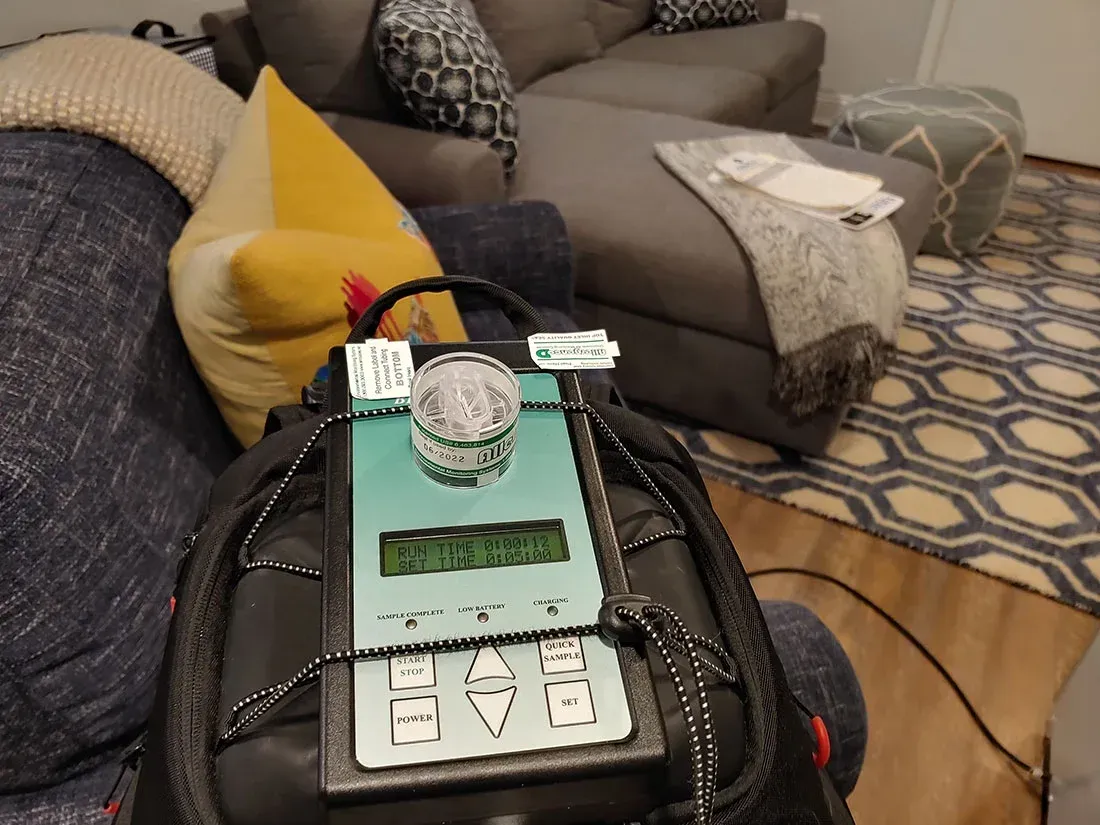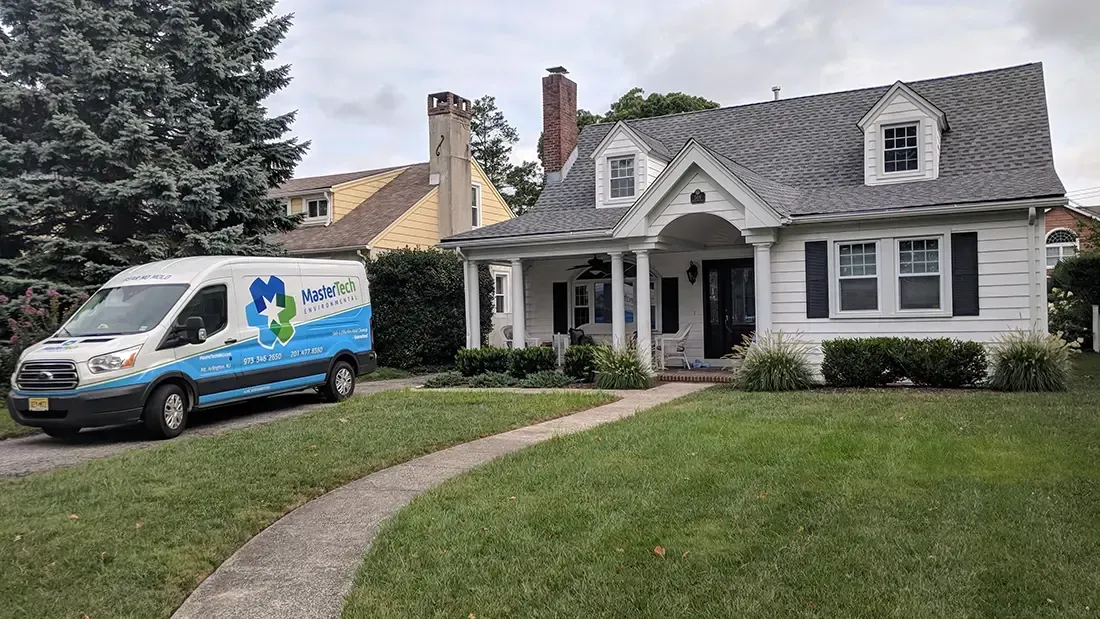How Much Does a Mold Inspection Cost, and What's Included?

Mold doesn't always announce its presence with dramatic black spots on walls or an unmistakable smell. Sometimes, it remains hidden behind walls, in attics, or beneath flooring, leading to questions about your home's health, safety, and overall soundness. Determining where to begin can be unsettling and confusing when you suspect a mold issue. That's why professional inspections are so crucial. For a standard 2,500-square-foot home, the service typically ranges between $350 and $400, including up to four lab samples. Below, we'll walk you through how a thorough inspection unfolds, why each step is important, and how it ultimately provides peace of mind about your indoor environment.
Looking Outward First: The Exterior Inspection
Some might wonder why the process begins when the concern is indoor mold. The answer is simple: moisture often creeps into your home from external sources. By identifying where water might be entering, you're tackling the root cause, not just the surface-level mold symptoms.
· Landscaping and Grading: Does rainwater pool near your foundation? Are the edges of your yard sloping toward the house? An inspector checks how water flows around the property so you can address any troublesome drainage patterns.
· Roof, Gutters, and Downspouts: Missing shingles, compromised flashing, or clogged gutters can all funnel water behind the siding or into the attic. By spotting minor weaknesses now, you can prevent larger mold issues down the road.
· Exterior Cracks and Gaps: Even tiny fissures around windows, doors, or utility lines allow moisture to sneak inside. These seemingly minor points of entry can quietly foster mold behind walls if they go unnoticed.
Examining your home's exterior reveals these vulnerabilities early, laying the groundwork for a more accurate interior investigation.
Addressing Known Concerns: Zeroing in on Potential Problem Areas
After the outside review, inspectors focus indoors, starting with the spots you're most worried about. Maybe you've noticed a persistent musty smell in the basement or spotted odd discoloration in a bathroom corner. If so, the inspector will begin in those locations to see if any surface mold is present or if moisture is silently gathering behind walls or floors. This focused approach ensures that immediate concerns are addressed head-on while paving the way for a broader inspection.
· Listening to Your Observations: Your firsthand experiences—like noticing increased allergy symptoms in one room or suspicious staining in another—help you target specific areas for closer scrutiny.
· Visual Checks and Early Testing: If the inspector sees any clear mold patches or water damage right away, they can often take a sample or measurement to confirm exactly what's lurking there.
Tackling the areas you're already worried about provides a sense of relief and ensures that nothing important is overlooked.
A Complete Sweep of Common Mold Hideouts
After homing in on the areas you're most worried about, it's easy to assume the worst of the inspection is over. But mold can be stubborn—sometimes setting up shop in spots you'd never think to check. Thoroughness matters here because one overlooked crawl space or damp attic beam can undo all your efforts to keep mold at bay. By methodically sweeping through basements, kitchens, attics, and more, inspectors help ensure that no sneaky patch of mold remains hidden, waiting to resurface when conditions are right.
· Basements and Crawl Spaces: These below-ground zones often suffer from humidity problems due to leaky pipes or natural dampness. Inspectors look for musty smells, wet insulation, or telltale wall discoloration.
· Kitchens, Bathrooms, and Laundry Areas: These rooms use a lot of water, making them prime targets for hidden leaks behind appliances or under sinks. Even slight condensation behind counters can quietly nurture mold growth.
· Attics: Roof leaks and poor ventilation sometimes turn attics into mold havens. Inspectors pay close attention to beams, insulation, and roof sheathing to spot signs of water intrusion.
The result? A clear picture of whether mold has infiltrated your home beyond those prominent trouble spots, allowing you to tackle any underlying issues before they escalate.
Tools of the Trade: Infrared Cameras and Moisture Meters
Once the entire home has been visually checked, it's natural to wonder if anything lurks behind the drywall or in subfloor layers. This is where specialized equipment becomes indispensable. By combining technology with expert eyes, inspectors can catch mold even when it's buried out of sight. For homeowners, this means fewer surprises down the line and greater peace of mind.
· Infrared (Thermal) Imaging: Thermal cameras detect slight temperature shifts. A cool patch in a wall or ceiling can signal trapped moisture, helping pinpoint trouble spots you'd otherwise miss.
· Moisture Meters: Wood framing and drywall shouldn't hold high moisture levels. Elevated readings in these materials serve as red flags, guiding the inspector to investigate more deeply.
These tools bridge the gap between surface-level checks and reality, empowering you with data-driven insights rather than guesswork.
Sampling and Lab Analysis: Pinpointing What's Really There
Even the most experienced inspector sometimes needs tangible proof of what kind of mold is present—or whether it's present. Visual cues and infrared cameras are excellent, but they can't always confirm the exact species of mold or the number of spores floating through the air. That's where samples and lab testing come in. By collecting real evidence, inspectors deliver definitive answers about what might be causing odor, stains, or health concerns.
· Surface Samples: A quick swab or tape sample is sent to the lab for analysis for suspicious spots on walls or floors. The results reveal whether mold is active and, if so, which type.
· Air Testing: If you or your family members struggle with allergies or respiratory issues, air sampling can detect mold spores even when surfaces look clean. This uncovers issues that are invisible to the naked eye.
Armed with these lab results, you won't just know that mold is there—you'll understand its scope and what it might be doing to your indoor environment.
The Cost Breakdown: Where Value Meets Peace of Mind
By this point, you've seen how in-depth a proper mold inspection can be, from checking outside the home to running specialized tests. It's not just a cursory glance; it's a full investigation aimed at keeping you and your family safe. Naturally, that level of thoroughness influences the price. For a home around 2,500 square feet, expect a ballpark of $350 to $400—a figure that typically covers up to four samples.
Why does the cost vary?
· Size and Complexity: Larger homes or multiple suspected problem areas might require extra sampling or more on-site time.
· Number of Tests: The more samples the lab must process, the higher the final bill.
· Severity of the Issue: If an inspector uncovers several hidden leaks or a widespread outbreak, additional steps may be necessary.
Although the upfront investment might feel like another expense on your homeowner's to-do list, it's an investment in maintaining a healthy living space and preventing future surprises.
Finding Confidence in a Thorough Mold Inspection
Mold problems can be unsettling, but hiring professionals for a comprehensive inspection relieves much of that stress. Inspectors create a complete picture of where mold might hide by starting outside, zeroing in on your primary concerns, expanding into known hot spots, and using specialized tools. Samples and lab results then confirm the severity and type of mold involved, allowing targeted action.
Typically costing $350 to $400 for most average-sized homes, this offers something invaluable: peace of mind. You gain clarity on your home's condition and guidance to keep it safe and dry for the long haul. If you've been worried about mold, remember that knowledge is power—knowing exactly where mold stands is the first step toward reclaiming a healthier, more comfortable home.





